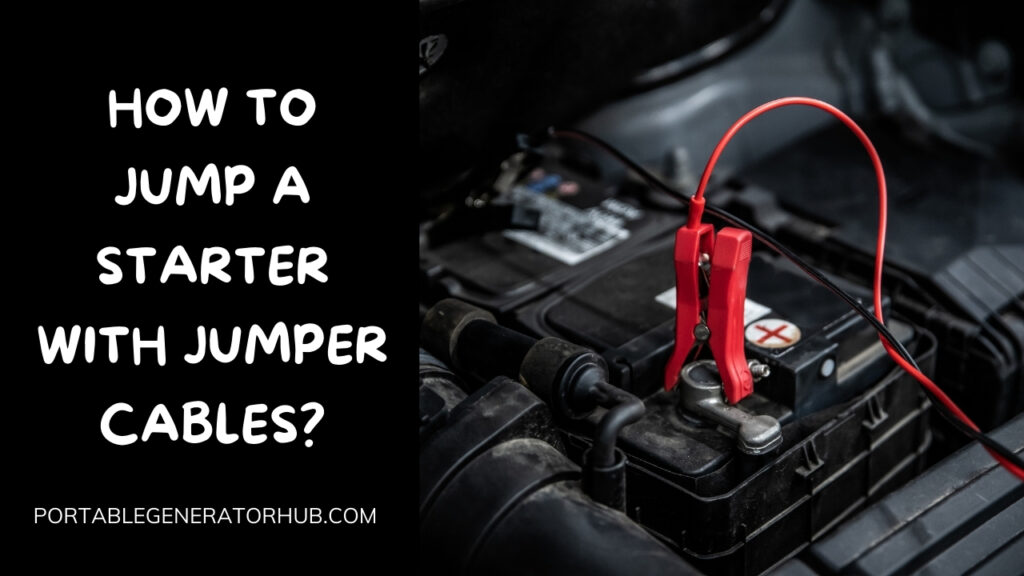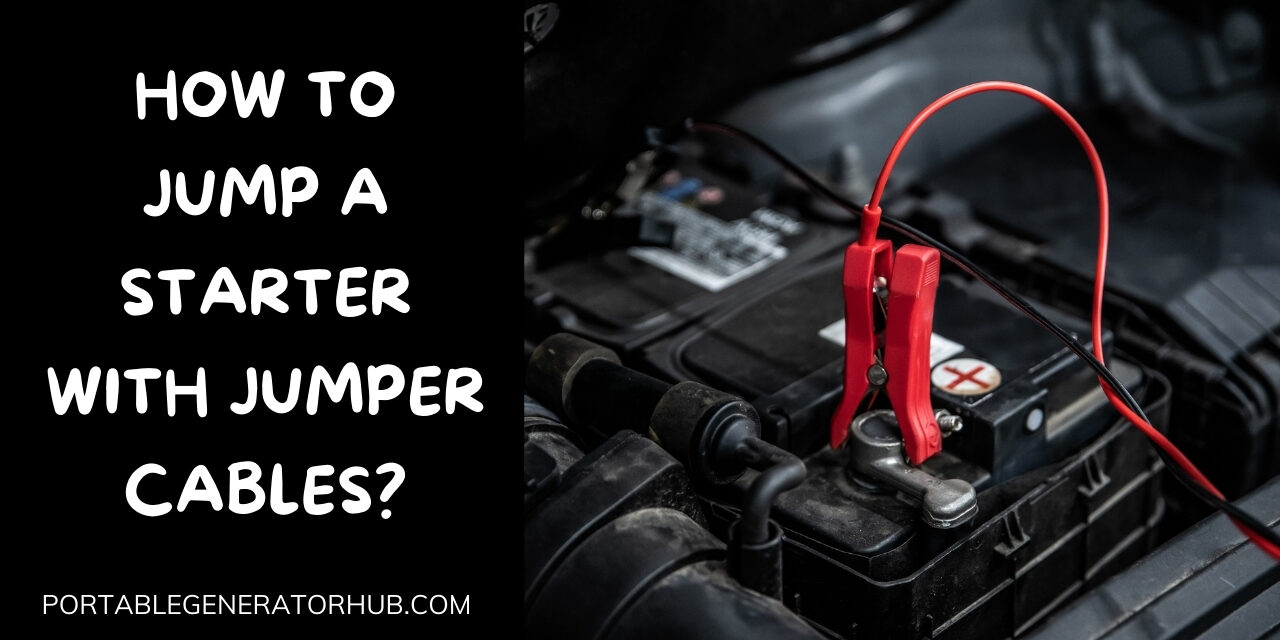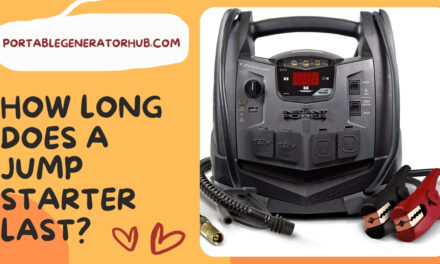
Do you know how to jump a starter with jumper cables? Everyone that drives a car should know this trick, and we’ll discuss it here in this article. When a car does not start on its own, the first thing that comes to mind is a weak battery, but in some cases, the battery could be fully charged and still, the car won’t start.
In this case, the starter could be the problem. No worries, there’s a way around it. You will have to jump the starter through its solenoid using jumper cables. Here’s how it works. When you try to start your car, the solenoid will send some current to the starter’s motor, and the motor actually turns the ignition to start your vehicle. If the starter has a problem, it won’t turn your engine on. Instead, you’ll hear a click sound.
This is why we came up with this article. After reading it, you’ll be able to work around the problem anytime you encounter it. First, we will discuss the steps involved in jumping a starter. After that, we will answer some frequently asked questions related to the issue. So, let’s get down to the nitty-gritty of the issue right away.
How To Jump A Starter With Jumper Cables? 7 Easy Steps
We must let you know that you should be very careful with the process. Remember, sparks may be flying around. That being said, let’s go straight to the points.
Step 1 – Check The Battery Of The Other Car
The first step is to check that the good battery supplies 12 volts. If the current supplied by the battery is less than 12 volts, the process won’t work. If the current supplied by the solenoid isn’t up to 12 volts, the motor won’t even roll. And if the motor does not roll, your car engine won’t start.
Connect a voltmeter to your battery. The positive voltmeter lead should be connected to the positive battery terminal. After that, you can connect the negative lead of the voltmeter to the negative terminal and check the reading. The needle should swing to exactly 12 volts. Then, you can be sure that the battery is fully charged.
Step 2 – Locate The Solenoid
The next step is to look for the solenoid. It is the cylindrical object on the motor of your starter. It is sometimes between the engine and the transmission. Once you have seen the solenoid, you can proceed to the next step.
Step 3 – Locate The Primary Side Of The Solenoid
The primary side of the solenoid has a terminal and there is usually a red or yellow wire attached to the terminal. That’s where the positive clamp of the jumper cables goes. Remember, the positive clamp of the jumper cable is the red one. Don’t forget that.
Step 4 – Connect The Red Clamp To The Solenoid
Connect one of the red clamps of the jumper cable to the good battery and connect the other red clamp to the small terminal on the solenoid. The positive terminal on the battery has a plus (+) sign on it. You could also wash off the corrosion on the terminal if necessary. If you’re not sure about the positive battery terminal, seek professional assistance.
Step 5 – Connect The Black Clamp To The Negative Battery Terminal
Connect one of the black clamps of the jumper cables to the negative terminal of the good battery and connect the other black clamp to the metal frame near the engine of the car with a dead battery. This is the point where many motorists usually make a terrible mistake. Don’t connect the negative black clamps to the negative terminals of both batteries. An explosion could occur.
The negative battery terminal usually has a minus (-) sign on it. Besides, once you’re able to identify the positive battery terminal, you know the other terminal should be negative.
Step 6 – Crank The Engine
Now, you can turn the ignition key of the car with a weak battery. The car should start right away. If it doesn’t start, then the starter, motor, or its solenoid has a problem. And if it starts and the battery isn’t getting charged or the car goes off immediately after, it means your alternator isn’t working as it should.
Step 7 – Remove The Jump Cables
Remove the negative (black) jumper cable first. Then remove the positive (red) cable too. Close your hood and let the car run for at least 5 minutes before you move. This allows the alternator to charge the battery.
That’s it. That is how to jump a starter with jumper cables. Now let’s answer some frequently asked questions.
Can You Jump A Starter With Cables?
Yes, you can jump a starter with cables. We have just explained the process above. However, it will work if the battery is well charged and supplies 12 volts. It is necessary to confirm that the battery supplies 12 volts. You can do that with a voltmeter.
If your car does not start even when the battery is fully charged, the problem may not be the battery. It could be that your starter has a problem. When you try to start it and it makes a clicking sound, it means that the solenoid is fine and working. In that case, the motor or the starter may have packed up.
But if the car does not start and does not make any clicking sound, it means that solenoid isn’t working. You may need to replace it. Whatever the case may be, we suggest that you consult a mechanic that will troubleshoot the problem and identify the component(s) that you need to be repaired or replaced.
Where Do You Put Jumper Cables When Jump Starting?
Knowing how to connect the jumper cables is very important. If you place them wrongly, it could lead to an explosion and you could get injured. Note that the jumper cables are two. One is red and the other is black. The red one has red clamps at both ends, while the black one has black clamps at both ends.
The red cable is the positive one while the black one is the negative one. In this situation, you should connect the small terminal of the solenoid of the car with the dead battery to the positive terminal of the battery of the other car. This means that one of the clamps should be connected to the solenoid and the other should be connected to the positive terminal of the good battery.
Also, you need to connect the negative cable from the negative terminal of the good battery to a metal frame in the engine of the car with a dead battery. This means that one of the black clamps should be connected to the negative terminal of the good battery and the other black clamp should be fixed to a metal frame near the engine of the car with the dead battery. This process is known as grounding.
Can You Bypass The Starter?
Yes, you can bypass the starter, but this should be done as a last resort. It is not so safe, so you have to be careful about it. When you try this, sparks may be flying around. Having sparks in a gasoline engine is not the best. You can only bypass the starter if the starter has a problem.
You will need a long screwdriver with a rubber handle to do this. The metal shaft of the screwdriver will be connected to the post on the solenoid to the motor. Once the motor rolls and the engine starts, you should remove the screwdriver immediately.
In What Order Do You Remove Jumper Cables?
In the removal of the cables, you will adopt the Last-In-First-Out (LIFO) protocol. Since you connected the negative (black) jumper cable last, you will remove it first. Remove the black clamp from the negative battery terminal and remove the other one from the metal frame.
After that, you can remove the positive red terminal from the positive battery terminal and remove the other one from the terminal of the solenoid. Close the hoods of both cars and the car with a good battery can drive off, but the jump-started car needs to run on the spot for up to 5 minutes before it zooms off.
How Long Should I Run My Car After A Jump Start?
Run it for at least 5 minutes before you drive off. By the time you get to your destination, the battery should be charged. And if you don’t plan to drive out the car, you can let it run for 15 minutes before you turn off the ignition. You can start it immediately after turning it off. The car should start on its own immediately.
Final Thoughts
Don’t make jump-starting a regular habit. If your car does not start on its own, there must be a problem with your battery, solenoid, motor, or alternator. Get it fixed or replaced as soon as you can. It is safer and more convenient for your car to start on its own.





